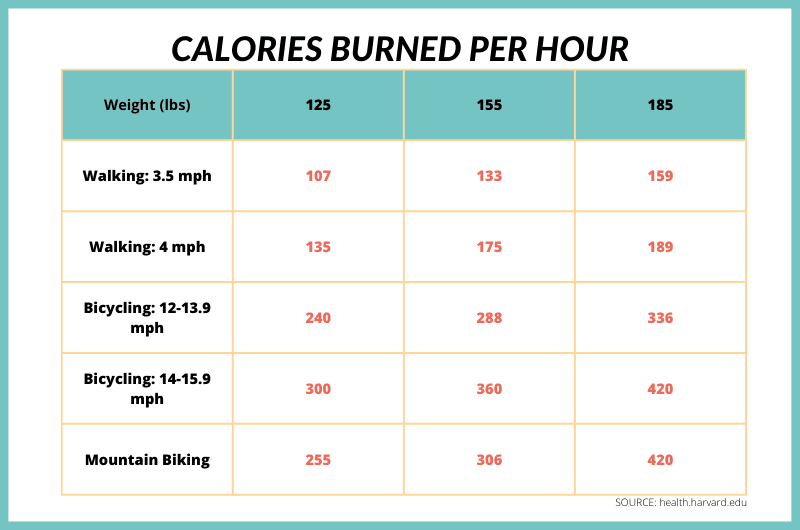
Walking or Cycling Whats Better to Lose Weight?
Walking or cycling what is a better to lose weight – Walking or cycling: what’s better to lose weight? That’s the million-dollar question, isn’t it? We all know exercise is key for shedding those extra pounds, but with so many options, choosing the right activity can feel overwhelming. This post dives deep into the calorie-burning potential, muscle engagement, and overall impact on your body of both walking and cycling, helping you decide which one best suits your lifestyle and goals.
We’ll explore the pros and cons of each, looking at everything from accessibility to injury prevention, so you can make an informed decision and start your weight loss journey with confidence.
Ultimately, the best exercise is the one you’ll actually stick with. We’ll explore ways to make both walking and cycling enjoyable and sustainable, helping you build a fitness routine that works for you, not against you. Get ready to discover which activity will help you reach your weight loss goals while boosting your overall health and well-being!
Calorie Expenditure Comparison

Source: ytimg.com
Choosing between walking and cycling for weight loss often comes down to individual preferences and goals. However, understanding the calorie expenditure of each activity can help you make an informed decision and tailor your workout routine for optimal results. Both activities are excellent for burning calories and improving overall fitness, but the rate of calorie burn can vary significantly depending on several factors.
Calorie expenditure during exercise depends on a complex interplay of factors. Your body weight plays a significant role; heavier individuals generally burn more calories at the same intensity and duration. The terrain also makes a difference; uphill cycling or walking burns significantly more calories than flat surfaces due to increased resistance. Finally, the intensity of your workout – measured by speed and perceived exertion – directly impacts calorie burn.
Higher intensity means more calories burned in the same amount of time.
Calorie Expenditure Table
The following table provides estimated calorie expenditure per hour for both walking and cycling at various speeds and terrains. These are averages and individual results may vary. Note that these are estimates and can be influenced by factors like fitness level, metabolism, and even the specific bike used.
| Activity | Speed/Terrain | Calories Burned (per hour) | Notes |
|---|---|---|---|
| Walking | 3 mph (flat) | 200-250 | Moderate pace on level ground |
| Walking | 4 mph (flat) | 300-350 | Brisk pace on level ground |
| Walking | 3 mph (hilly) | 350-400 | Moderate pace with significant incline |
| Cycling | 10 mph (flat) | 300-400 | Moderate pace on level ground |
| Cycling | 15 mph (flat) | 450-550 | Faster pace on level ground |
| Cycling | 10 mph (hilly) | 500-600 | Moderate pace with significant incline |
Workout Examples and Calorie Estimates
Let’s consider some specific workout examples to illustrate calorie expenditure differences. These are estimates and will vary based on individual factors.
Example 1: A 30-minute brisk walk (4 mph on flat terrain) might burn approximately 150-175 calories (half the hourly estimate). A 30-minute cycling session at 10 mph on flat terrain could burn approximately 150-200 calories.
Example 2: A 60-minute hike on hilly terrain, involving a moderate walking pace (3 mph average), could burn around 350-400 calories. A 60-minute cycling session at 15 mph on a mostly flat route could burn approximately 450-550 calories.
Example 3: A high-intensity interval training (HIIT) session involving alternating periods of fast walking and slower recovery periods could significantly increase calorie burn compared to a constant pace walk of the same duration. Similarly, incorporating intervals of high-intensity cycling into a longer ride will boost calorie expenditure. These examples highlight how intensity impacts calorie burn, regardless of the chosen activity.
Impact on Metabolism
Choosing between walking and cycling for weight loss often focuses on calorie burn. However, the impact on your metabolism is equally crucial for long-term success. Both activities influence your resting metabolic rate (RMR), the number of calories your body burns at rest, and contribute to a faster metabolism overall, aiding weight management beyond the immediate exercise period.Regular engagement in either walking or cycling triggers various metabolic adaptations.
These changes extend beyond simple calorie expenditure during the activity itself, impacting how efficiently your body uses energy even when you’re inactive. This metabolic boost is a key factor in sustainable weight loss and maintenance.
Resting Metabolic Rate and Aerobic Exercise
Studies have shown a correlation between regular aerobic exercise, such as walking and cycling, and an increased resting metabolic rate. While the increase might not be dramatic in the short term, the cumulative effect over weeks and months can be significant. For example, a study published in theJournal of Applied Physiology* demonstrated that individuals who engaged in moderate-intensity aerobic exercise for 12 weeks experienced a noticeable increase in their RMR compared to a control group.
This increase is attributed to several factors, including increased muscle mass (even from moderate activity), improved mitochondrial function (the powerhouses of your cells), and hormonal changes that influence metabolism.
Metabolic Boost and Long-Term Weight Management
The metabolic boost from consistent walking or cycling contributes significantly to long-term weight management. A higher RMR means you burn more calories even when at rest, making it easier to maintain a healthy weight. This is because your body becomes more efficient at utilizing energy, reducing the likelihood of weight regain after achieving weight loss goals. Imagine two individuals who have lost the same amount of weight: one with a boosted metabolism will find it easier to stay at their target weight because their body naturally burns more calories throughout the day.
This effect is further enhanced by the increase in lean muscle mass that typically accompanies regular physical activity.
Research Findings on Aerobic Exercise and Metabolic Changes
Numerous research studies support the positive impact of aerobic exercise on metabolism. Many studies, utilizing techniques such as indirect calorimetry (measuring oxygen consumption and carbon dioxide production to estimate energy expenditure), have consistently demonstrated that individuals who engage in regular aerobic exercise experience increases in RMR. These improvements are often accompanied by changes in body composition, with a reduction in body fat percentage and an increase in lean muscle mass.
So, walking versus cycling for weight loss? It really depends on intensity and duration, but both are great! Interestingly, managing the energy levels of a child can be a challenge, especially if they have conditions like Tourette Syndrome; check out this article on strategies to manage Tourette syndrome in children for some helpful tips.
Understanding energy expenditure helps tailor exercise to individual needs, whether it’s a brisk walk or a leisurely bike ride for weight management.
Furthermore, research suggests that the positive metabolic adaptations resulting from aerobic exercise can persist even after the exercise program has ceased, albeit to a lesser degree. This highlights the long-term benefits of incorporating regular walking or cycling into a lifestyle for weight management.
Muscle Engagement and Strength
Choosing between walking and cycling for weight loss often focuses on calorie burn. However, the type and amount of muscle engagement play a crucial role in overall fitness and metabolic benefits, impacting long-term weight management success. Understanding the differences in muscle activation between these two activities helps determine which is better suited to your individual goals.
Both walking and cycling are excellent forms of low-impact exercise, but they engage different muscle groups to varying degrees. This difference impacts not only immediate calorie expenditure but also the potential for muscle building and strength gains, which significantly influence your metabolism and weight management.
Muscle Groups Engaged During Walking and Cycling
The following lists detail the primary muscle groups engaged in each activity. The intensity of engagement varies based on factors such as terrain, speed, and resistance.
- Walking: Walking primarily engages the lower body. Key muscles include the gluteus maximus (buttocks), quadriceps (front of thighs), hamstrings (back of thighs), calf muscles (gastrocnemius and soleus), and hip flexors. The core muscles (abdominals and back muscles) are also engaged for balance and stability. Arm movement increases the involvement of the biceps, triceps, and shoulder muscles.
- Cycling: Cycling primarily uses the lower body, but the muscle engagement differs from walking. The quadriceps, hamstrings, and calf muscles are heavily involved in pedaling. The core muscles are also important for stability and power transfer. Upper body engagement is minimal unless you’re cycling uphill or encountering significant wind resistance.
Potential for Muscle Building and Strength Gains
While both activities can improve muscle tone and endurance, the potential for significant muscle growth and strength gains differs. The type of muscle fiber recruited and the intensity of the exercise are key factors.
Walking, particularly uphill walking or walking with added resistance (like wearing a weighted vest), can contribute to muscle strengthening in the lower body. However, the potential for significant hypertrophy (muscle growth) is limited compared to resistance training. Cycling, similarly, improves lower body muscle endurance, but significant strength gains require variations like hill climbing or high-resistance interval training.
Role of Muscle Mass in Metabolism and Weight Management
Muscle mass plays a vital role in weight management because it increases your resting metabolic rate (RMR). RMR is the number of calories your body burns at rest to maintain basic bodily functions. The more muscle mass you have, the higher your RMR, meaning you burn more calories even when you’re not exercising. This is crucial for long-term weight management, as a higher RMR makes it easier to maintain a healthy weight.
For example, a person with more muscle mass might burn 100-200 more calories per day at rest compared to someone with less muscle mass, significantly contributing to their overall calorie expenditure and making weight loss easier to maintain. Building muscle through strength training, combined with cardio activities like walking or cycling, is a powerful approach for optimizing metabolism and promoting sustainable weight loss.
Accessibility and Practicality
Choosing between walking and cycling for weight loss often comes down to more than just calories burned; accessibility and practicality play a significant role in long-term adherence. Both offer excellent fitness benefits, but their suitability varies greatly depending on your environment and lifestyle.The accessibility and practical considerations of walking and cycling are closely intertwined, impacting the ease with which you can integrate these activities into your daily routine.
Factors such as distance, terrain, weather, and available time all influence your choice.
Environmental Accessibility
Walking and cycling offer different levels of accessibility depending on the environment. In urban areas, cycling can be challenging due to traffic congestion and a lack of dedicated bike lanes. Walking, however, is often more convenient for shorter distances, especially within neighborhoods or to reach public transportation. Suburban areas typically offer a better balance, with more sidewalks and potentially dedicated bike paths.
However, distances between destinations may be greater. Rural environments often present the most challenges for both, with limited infrastructure and potentially hazardous roads or uneven terrain. Walking might be more feasible for shorter distances in rural settings, while cycling could be suitable for longer trips on suitable roads.
Practical Considerations
The following table summarizes the practical considerations of walking and cycling:
| Factor | Walking | Cycling |
|---|---|---|
| Time Commitment | Can be incorporated into daily routines; requires less time for shorter distances. | More efficient for longer distances; requires more planning for longer commutes. |
| Equipment Needs | Minimal; comfortable shoes are essential. | Requires a bicycle, helmet, and potentially lights and other safety gear. |
| Weather Conditions | More susceptible to extreme weather conditions; rain, snow, and extreme heat can significantly impact comfort and safety. | Relatively less affected by moderate weather; however, heavy rain or snow can still pose challenges. |
| Terrain | Suitable for most terrains, but challenging on steep hills or uneven surfaces. | Less suitable for steep hills or very rough terrain; smoother surfaces are preferred. |
Integrating Walking and Cycling into a Busy Lifestyle
Integrating physical activity into a busy schedule requires planning and commitment. For walking, consider incorporating it into your daily commute by getting off public transport a stop early or parking further away from your destination. Lunchtime walks are also a great option. For cycling, consider cycling to work or errands if feasible. Even short bike rides during breaks or in the evenings can contribute to your overall activity levels.
For example, a busy professional might opt for a brisk 30-minute walk during their lunch break three times a week and a weekend cycling trip for a longer, more intense workout. A family with children could incorporate walking or cycling into their daily routines by choosing to walk or cycle to school or nearby parks. A student could cycle to classes or use their bike for errands instead of relying on a car.
These are just a few examples of how to creatively fit physical activity into a packed schedule.
Impact on Cardiovascular Health
Both walking and cycling offer significant cardiovascular benefits, but they engage the body in slightly different ways, leading to varied impacts on heart health. Understanding these differences can help you tailor your exercise routine for optimal results. While both activities improve cardiovascular fitness, the intensity and specific physiological responses differ.
Both walking and cycling are excellent forms of aerobic exercise, meaning they increase your heart rate and breathing, improving the efficiency of your cardiovascular system. This improvement translates to a lower resting heart rate, lower blood pressure, and improved cholesterol levels. However, the intensity at which these improvements occur varies depending on the activity and individual fitness level.
Heart Rate, Blood Pressure, and Cholesterol
Cycling, particularly at higher intensities, tends to elevate the heart rate more quickly than walking at a comparable perceived exertion. This is because cycling often involves larger muscle groups working more intensely, demanding a greater oxygen uptake and increased heart rate response. Conversely, walking, especially at a brisk pace, offers a more sustainable, lower-impact cardio workout, which can be beneficial for individuals with certain health conditions or those just starting an exercise program.
Both activities, however, contribute to lowering resting heart rate and blood pressure over time, and improved cholesterol profiles are seen with regular participation in either activity.
Studies consistently show that regular aerobic exercise, including both walking and cycling, helps lower LDL (“bad”) cholesterol and raise HDL (“good”) cholesterol levels. This is crucial for preventing heart disease and stroke. The magnitude of the improvement can vary based on factors such as the frequency, intensity, and duration of exercise, as well as individual characteristics. For example, a study published in the Journal of the American Medical Association showed a significant reduction in cardiovascular events in individuals who engaged in at least 150 minutes of moderate-intensity aerobic activity per week, regardless of whether it was walking or cycling.
Sample Workout Plan
A balanced approach incorporating both walking and cycling can provide a comprehensive cardiovascular workout. The following sample plan is designed for someone with a moderate fitness level and can be adjusted based on individual needs and capabilities.
Week 1-4 (Beginner):
- Monday: 30 minutes brisk walking
- Wednesday: 20 minutes cycling at a moderate pace
- Friday: 30 minutes brisk walking
- Rest: Tuesday, Thursday, Saturday, Sunday
Week 5-8 (Intermediate):
- Monday: 45 minutes brisk walking, including intervals of faster pace
- Wednesday: 30 minutes cycling, incorporating hills or increased resistance
- Friday: 45 minutes brisk walking
- Saturday: 20 minutes cycling at a moderate pace
- Rest: Tuesday, Thursday, Sunday
Week 9-12 (Advanced):
- Monday: 60 minutes brisk walking with incline or varied terrain
- Wednesday: 45 minutes cycling with high-intensity intervals
- Friday: 60 minutes brisk walking
- Saturday: 30 minutes cycling at a moderate pace
- Sunday: Rest or light activity like yoga or stretching.
Remember to consult your doctor before starting any new exercise program. This plan is a suggestion and should be adapted to your personal fitness level and preferences. Listen to your body and adjust the intensity and duration as needed. Proper hydration and nutrition are also crucial for maximizing the benefits of your workouts.
Injury Prevention and Risk Factors
Both walking and cycling, while generally low-impact activities, carry inherent risks of injury. Understanding these risks and implementing preventative measures is crucial for enjoying these activities safely and avoiding setbacks in your weight loss journey. Proper technique, appropriate equipment, and a mindful approach to training are key to minimizing potential harm.
Potential Injury Risks in Walking
Walking, despite its simplicity, can lead to injuries, particularly with improper form or excessive mileage. Common issues include plantar fasciitis (inflammation of the plantar fascia, the tissue on the bottom of the foot), ankle sprains, knee pain (often related to patellofemoral pain syndrome or osteoarthritis), and lower back pain. These injuries often stem from overuse, improper footwear, and inadequate warm-up and cool-down routines.
For instance, someone suddenly increasing their daily walking distance from 2 miles to 10 miles without proper preparation is at significantly higher risk of developing plantar fasciitis.
Potential Injury Risks in Cycling
Cycling injuries frequently involve the lower extremities and back. Common problems include knee pain (often due to improper bike fitting or overuse), hamstring strains, wrist injuries from falls, and lower back pain from prolonged periods in a bent-over position. Neck pain can also be an issue, particularly with improper posture. For example, a cyclist with a bike seat that is too low might experience knee pain, while an improperly adjusted handlebar position could lead to neck and back strain.
Proper Techniques and Safety Precautions for Walking, Walking or cycling what is a better to lose weight
Maintaining good posture—standing tall with a slight bend in the knees—is essential. Choosing appropriate footwear that provides adequate support and cushioning is crucial. Walking on even, well-maintained surfaces reduces the risk of falls and sprains. Gradually increasing walking distance and intensity prevents overuse injuries. Proper stretching before and after walks is critical.
For example, calf stretches and hamstring stretches can prevent many common walking-related injuries.
Proper Techniques and Safety Precautions for Cycling
Proper bike fitting is paramount. A professional bike fitting can ensure the bike is adjusted correctly for your body type, minimizing strain on joints. Wearing a helmet is non-negotiable to protect against head injuries in the event of a fall. Maintaining awareness of surroundings and traffic is crucial for safety. Using appropriate hand signals when turning or stopping is essential for preventing accidents.
Regularly checking your bike’s mechanical components ensures it is functioning safely. For example, ensuring brakes are properly functioning can prevent a serious accident.
So, walking versus cycling for weight loss? It really depends on intensity and duration, but both are great! To maximize results, though, fueling your body correctly is key, which brings me to this fascinating article: are women and men receptive of different types of food and game changing superfoods for women. Understanding nutritional needs is crucial, whether you’re pounding the pavement or cruising on two wheels.
Ultimately, consistent exercise combined with a healthy diet will get you to your goals faster.
Warm-up and Cool-down Routines for Injury Prevention
A proper warm-up increases blood flow to muscles and prepares the body for activity. A dynamic warm-up, involving movements like leg swings and arm circles, is ideal for both walking and cycling. A cool-down helps the body gradually return to its resting state and reduces muscle soreness. Static stretches, holding each stretch for 20-30 seconds, are beneficial during the cool-down.
So, walking vs. cycling for weight loss? It really depends on intensity and duration, but both are great! Maintaining a healthy lifestyle is key, and that includes regular checkups, which brings me to something fascinating I read: research suggests that a simple eye test, as discussed in this article can eye test detect dementia risk in older adults , might help predict dementia risk.
Keeping your brain and body healthy go hand-in-hand, so whether you choose walking or cycling, remember consistency is the real winner!
For example, a warm-up might include 5 minutes of brisk walking followed by dynamic stretches, while a cool-down could involve 5 minutes of slow walking and static stretches targeting the legs and back. Ignoring warm-up and cool-down routines significantly increases the risk of muscle strains and other injuries.
Psychological Benefits and Motivation
Walking and cycling offer a wealth of psychological benefits beyond the physical advantages. Regular engagement with these activities can significantly impact our mental wellbeing, boosting mood and reducing stress levels, ultimately contributing to a more positive and fulfilling life. These positive effects are intertwined with the increased motivation needed to maintain a consistent exercise routine.Regular physical activity, including walking and cycling, has been shown to reduce symptoms of anxiety and depression.
The rhythmic movement involved in these activities can be meditative, allowing for a mental break from daily stressors. Furthermore, the release of endorphins during exercise acts as a natural mood booster, leaving you feeling happier and more energized. This positive feedback loop can be incredibly powerful in maintaining motivation over the long term.
Stress Reduction Techniques Through Walking and Cycling
The repetitive nature of walking and cycling provides a focus that can help quiet a racing mind. The rhythmic movement acts as a distraction from worries and anxieties, allowing for a period of mental calm. Furthermore, spending time outdoors, whether walking through a park or cycling along a scenic route, can be incredibly restorative. Exposure to natural light and fresh air has been linked to reduced stress hormones and improved mood.
Even a short walk or cycle can provide a noticeable reduction in stress levels. Consider incorporating mindfulness techniques, such as focusing on your breath or the sensations in your body, to further enhance the stress-reducing effects.
Maintaining Motivation and Adherence
Maintaining a consistent walking or cycling routine requires a proactive approach to motivation. Setting realistic goals, starting slowly and gradually increasing intensity and duration, is crucial to prevent burnout and maintain enthusiasm. Tracking progress, whether through a fitness tracker or a simple journal, can provide a sense of accomplishment and encourage continued effort. Finding a walking or cycling buddy can provide accountability and make the experience more enjoyable.
Rewarding yourself for achieving milestones, such as completing a certain number of workouts or reaching a specific distance, can also help maintain motivation. Remember that consistency is key; even short, regular sessions are more beneficial than infrequent, intense ones.
Creating a Positive and Enjoyable Experience
To maximize enjoyment and encourage adherence, it’s essential to personalize your walking or cycling experience. Choose routes that are visually appealing and stimulating, perhaps incorporating parks, scenic trails, or interesting neighborhoods. Listen to uplifting music or podcasts to enhance your enjoyment. Vary your routes and activities to prevent boredom. Consider joining a cycling club or walking group to connect with like-minded individuals and share the experience.
Remember that the goal is not just weight loss, but also to create a sustainable and enjoyable lifestyle change. Prioritize activities that you genuinely find fun and rewarding. Celebrate your progress and acknowledge your achievements, focusing on the positive aspects of your journey.
Individual Considerations and Personalization: Walking Or Cycling What Is A Better To Lose Weight

Source: discerningcyclist.com
Choosing between walking and cycling for weight loss isn’t a one-size-fits-all proposition. The best option depends heavily on individual factors, making personalization key to success and safety. Ignoring these factors can lead to frustration, injury, or even abandonment of the weight loss program. Understanding your personal limitations and preferences is crucial for creating a sustainable and effective plan.Factors such as age, current fitness level, and any pre-existing physical limitations significantly impact the suitability and effectiveness of walking versus cycling.
Older individuals or those with joint problems might find walking more challenging or even painful, while cycling offers a lower-impact alternative. Conversely, individuals with excellent cardiovascular fitness might find walking insufficiently challenging for weight loss, while cycling could provide a more intense workout. Tailoring a program to individual needs increases adherence and reduces the risk of injury.
Age and Fitness Level Influence on Exercise Choice
Age significantly influences the choice between walking and cycling. Older adults, particularly those with arthritis or other joint issues, may find cycling a gentler, less stressful activity on their joints compared to walking. Conversely, younger, fitter individuals might find walking insufficiently challenging for significant weight loss, necessitating the higher intensity of cycling. Fitness level also plays a role; beginners might start with shorter, easier walks before progressing to longer distances or incorporating inclines, while experienced individuals could incorporate interval training into both walking and cycling routines.
For example, a 65-year-old with knee pain might benefit from cycling, whereas a 30-year-old athlete might prefer cycling intervals for a more intense calorie burn.
Personalizing Walking and Cycling Programs
Personalizing a program involves considering several key aspects. Firstly, it’s crucial to start slowly and gradually increase the intensity and duration of the activity. This prevents injury and burnout. For walking, this could involve starting with 15-minute walks and gradually increasing the duration and incorporating inclines. For cycling, this might mean starting with shorter, flat routes and gradually increasing distance and incorporating hills.
Secondly, incorporating variety is essential to maintain motivation. This could involve changing routes, trying different terrains, or cycling with a friend. Finally, incorporating strength training exercises is beneficial for overall fitness and can help improve performance in both walking and cycling. A personalized plan for a sedentary individual might begin with 30 minutes of walking three times a week, gradually increasing to 45 minutes, then 60 minutes, and eventually incorporating some light jogging.
A fitter individual might start with longer cycling sessions and incorporate hill climbs or interval training.
Sample Questionnaire for Assessing Suitability
A simple questionnaire can help individuals assess their suitability for walking and cycling. This questionnaire should be completed honestly and used as a guide, not a definitive diagnosis. Medical advice should always be sought if there are any concerns.
| Question | Answer Options |
|---|---|
| What is your age? | [Open text field] |
| What is your current fitness level (sedentary, lightly active, moderately active, very active)? | [Radio buttons: Sedentary, Lightly Active, Moderately Active, Very Active] |
| Do you have any pre-existing medical conditions (e.g., heart problems, joint pain, back problems)? | [Yes/No, with open text field for details if yes] |
| Do you experience any pain or discomfort when walking or cycling? | [Yes/No, with open text field for details if yes] |
| How many days a week are you able to commit to exercise? | [Open text field] |
| How much time are you able to dedicate to each exercise session? | [Open text field] |
Final Summary

Source: futurecdn.net
So, walking or cycling for weight loss? The truth is, both are fantastic choices, offering unique benefits for your body and mind. The key is finding the activity that fits seamlessly into your life, that you genuinely enjoy, and that challenges you without overwhelming you. Don’t be afraid to experiment with both, incorporating them into a balanced fitness routine.
Remember, consistency is key – and finding an activity you love will make sticking to your weight loss goals much easier. Happy walking or cycling!
FAQ Explained
Can I lose weight walking or cycling just once a week?
While any exercise is better than none, consistent exercise is more effective for weight loss. Aim for at least 3-5 sessions per week for optimal results.
Is it better to walk or cycle on an empty stomach?
This depends on your individual preferences and tolerance. Some find it easier to exercise on an empty stomach, while others prefer a light snack beforehand. Listen to your body and experiment to see what works best for you.
How long should my walking or cycling workouts be?
Aim for at least 30 minutes of moderate-intensity exercise most days of the week. You can gradually increase the duration and intensity as you get fitter.
What if I have knee problems? Is cycling better than walking?
Cycling is generally considered lower impact than walking, placing less stress on the knees. However, it’s always best to consult a doctor or physical therapist before starting any new exercise program, especially if you have pre-existing conditions.





